Last summer I took in the Columbia Garden Tour and couldn’t help but notice that nearly every garden utilized recycling/upcycling in some way. The gardens also incorporated antiques and art – much of which was created by local artists – into the designs. And, a few served as reminders of favorite vacation destinations and were filled with mementos of those cherished trips. Each garden was unique and memorable.
It seems that Columbia’s residents are “recycling” the practices of the Victorians who came before them. The Victorians set a precedent by creating garden “rooms” and filling them with garden art. Finding those unique pieces to carry out a theme is part of the fun of gardening. And, as I learned from Columbia’s gardening enthusiasts, look beyond the tried and true and explore antiques shops, art galleries and craft shows to find out-of-the-ordinary items that will make your garden shine.
On the following pages, we are sharing two gardens from last year’s tour that beautifully demonstrate recycling and upcycling. Note: The Columbia Garden Tour will be on a hiatus this year.
Victorian Renaissance
Columbia is home to impressive examples of Late Victorian architecture. The town has been undergoing a “renaissance” of late, due in part to home buyers who are helping to reinvigorate it one “fixer upper” at a time.
You can include Kelly and Rebecca Murphy as being a part of Columbia’s renaissance. Kelly, a Berks County native, and Rebecca, who grew up in Elizabethtown, met as students at Millersville State College. They married and took up residence in Berks County. Sixteen years ago, a job opportunity for Kelly brought them back to Lancaster. During his commutes to and from work in Marietta, Kelly would look for homes that were for sale. “One day, he said, ‘I found the perfect house for us,’ and showed me a picture of it,” Rebecca recalls.
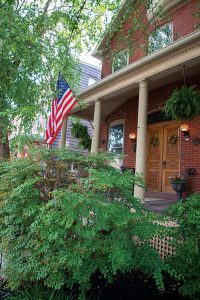 They loved the house, and Rebecca was excited to be close to family, so they made an offer and found themselves the owners of a Late Victorian brick house that had once served as the parsonage for a church. “People have told me that it could date to the 1850s, but the earliest records I have found for it date it to 1870,” Kelly says.
They loved the house, and Rebecca was excited to be close to family, so they made an offer and found themselves the owners of a Late Victorian brick house that had once served as the parsonage for a church. “People have told me that it could date to the 1850s, but the earliest records I have found for it date it to 1870,” Kelly says.
Like many newcomers to small-town living, the Murphys embraced their new hometown and became involved in the community. Kelly is a member of City Council, and both are enthusiastic about the evolution of Columbia and what the future holds.
Just like the Victorian homes that are being given new leases on life, Columbia’s gardens are enjoying a revival. That is clearly seen in the Murphys’ backyard.
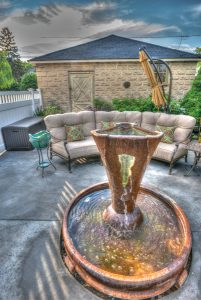 Gardening, Victorian-style, represented a shift in lifestyle during the latter part of the 19th century. New and improved technology, access to a widening variety of plant stock and increased leisure time led to a fascination with gardening, prompting it to become a favorite pastime on both sides of the Atlantic. The Victorians created garden “rooms” outdoors and furnished and decorated them with wrought-iron furniture, statuary and other forms of garden art. Fish ponds and fountains were popular, as were greenhouses and indoor plant rooms. Like the era’s architecture, garden styles ranged from very formal to cottage quaint.
Gardening, Victorian-style, represented a shift in lifestyle during the latter part of the 19th century. New and improved technology, access to a widening variety of plant stock and increased leisure time led to a fascination with gardening, prompting it to become a favorite pastime on both sides of the Atlantic. The Victorians created garden “rooms” outdoors and furnished and decorated them with wrought-iron furniture, statuary and other forms of garden art. Fish ponds and fountains were popular, as were greenhouses and indoor plant rooms. Like the era’s architecture, garden styles ranged from very formal to cottage quaint.
Kelly and Rebecca had a blank slate with which to work. “It was pretty much just grass and two trees,” Kelly recalls. “And, tulips everywhere!” Rebecca adds.
Like the Victorians, it was Rebecca’s vision to create “rooms” in the backyard, each of which would have a theme. “I really didn’t know what I was doing,” she admits. “I’d buy something and run out before I left for school in the morning [she’s an English as a Second Language teacher in the School District of Lancaster] and plant it.”
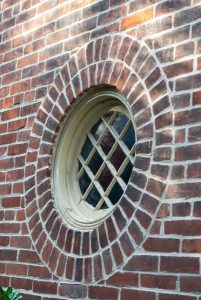 The plants provided the framework for what would become her English-style four-square herb garden in which quadrants are devoted to culinary, medicinal, biblical and fragrant herbs. “We also grow eight kinds of tea,” Kelly reports. The center of the garden contains a yucca plant, which harkens to Pennsylvania Dutch four-square gardens. The yucca, which was commonly known as the Adam-and-Eve plant, the Disciple’s plant and Our Lord’s Sword, symbolized the grower’s protestant faith. Catholics symbolized their faith with a Rosemary plant, which represented the Virgin Mary. As is tradition, the garden is surrounded by a fence and is accessible via an arbor gateway.
The plants provided the framework for what would become her English-style four-square herb garden in which quadrants are devoted to culinary, medicinal, biblical and fragrant herbs. “We also grow eight kinds of tea,” Kelly reports. The center of the garden contains a yucca plant, which harkens to Pennsylvania Dutch four-square gardens. The yucca, which was commonly known as the Adam-and-Eve plant, the Disciple’s plant and Our Lord’s Sword, symbolized the grower’s protestant faith. Catholics symbolized their faith with a Rosemary plant, which represented the Virgin Mary. As is tradition, the garden is surrounded by a fence and is accessible via an arbor gateway.
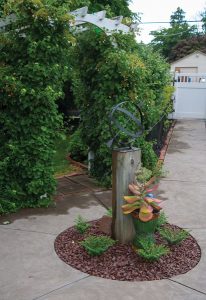 Kelly meanwhile was creating pathways and a patio. While digging his way through the backyard, he unearthed a concrete fish pond and hundreds of bricks. “I couldn’t dig anywhere without hitting bricks,” he recalls. The fish pond was repaired, but in the end, they removed it because it was too shallow for fish to survive over the winter. Another reason for its removal materialized when Kelly happened to look out into the backyard and spy an egret helping itself to the fish. “I wondered what was happening to my fish and now I knew,” he says. The bricks, however, were salvaged and used to line pathways and the quadrants of the four-square garden. “Finding them made sense,” he explains. “Columbia once had a lot of brick factories.”
Kelly meanwhile was creating pathways and a patio. While digging his way through the backyard, he unearthed a concrete fish pond and hundreds of bricks. “I couldn’t dig anywhere without hitting bricks,” he recalls. The fish pond was repaired, but in the end, they removed it because it was too shallow for fish to survive over the winter. Another reason for its removal materialized when Kelly happened to look out into the backyard and spy an egret helping itself to the fish. “I wondered what was happening to my fish and now I knew,” he says. The bricks, however, were salvaged and used to line pathways and the quadrants of the four-square garden. “Finding them made sense,” he explains. “Columbia once had a lot of brick factories.”
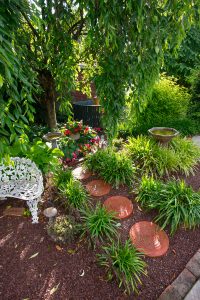 While visits from egrets weren’t appreciated, the Murphys welcomed other birds to their backyard. Feeders, a wide variety of annuals and perennials, ornamental trees and water sources entice hummingbirds, blue jays, doves, cardinals and other winged creatures to visit. One of the “rooms” is certified by the National Wildlife Federation as a Wildlife Habitat.
While visits from egrets weren’t appreciated, the Murphys welcomed other birds to their backyard. Feeders, a wide variety of annuals and perennials, ornamental trees and water sources entice hummingbirds, blue jays, doves, cardinals and other winged creatures to visit. One of the “rooms” is certified by the National Wildlife Federation as a Wildlife Habitat.
Rebecca also envisioned a pergola in the backyard. “I always wanted one,” she says. One day, as she was driving to work, she noticed workmen were removing the porch at the Central Manor Bakery & Grill, and she eyed the porch posts that were on a pile for removal. “I loved them and asked if I could buy them,” she explains. The posts sat in the garage for three years until Kelly found the other element he felt the pergola would need – wrought-iron that would serve as trim for the top of the structure. “I found it at Burning Bridge Antiques,” he says. Wisteria is being grown to provide a natural roof for the structure. “Right now, it’s used as a sitting room, but eventually I might convert it to a dining area,” Rebecca remarks.
The Murphys love of gardening has evolved into antiquing. One of their favorite destinations is Potting Shed Antiques in Farmersville, where they purchased the fencing that surrounds the four-square garden, as well as a variety of garden art. Ironwork from a stove company (appropriately named Columbian) was discovered at an antiques store in Strasburg. And, a large teak bench that was once a fixture on a Cumberland County farm was discovered at a flea market in Carlisle. They also buy plants wherever they travel.
Their latest project, which was completed last spring, is a meditation garden at the rear of the property. It pays tribute to their eldest son, Kelly, Jr., who was killed in a traffic accident on Christmas night, 2015. “Our three sons always threatened to macadam over their backyards and turn them into basketball courts because of all the weeding I made them do,” Rebecca recalls. Kelly, Jr., however, learned to love the process and assisted his parents with the construction aspect of their projects, including the pergola. “It’s just a nice place to go and spend some quiet time,” Rebecca notes of the meditation room.
As is an often-heard refrain, a garden is never finished, and the Murphys agree with that sentiment. “It’s a work in progress,” Rebecca says of new elements such as their grandchildren’s fairy garden and an emphasis on large-scale container gardens.
A Scrapture Garden
The saying, “One man’s trash is another man’s treasure,” aptly fits Ron Sahd’s perception of garden art.
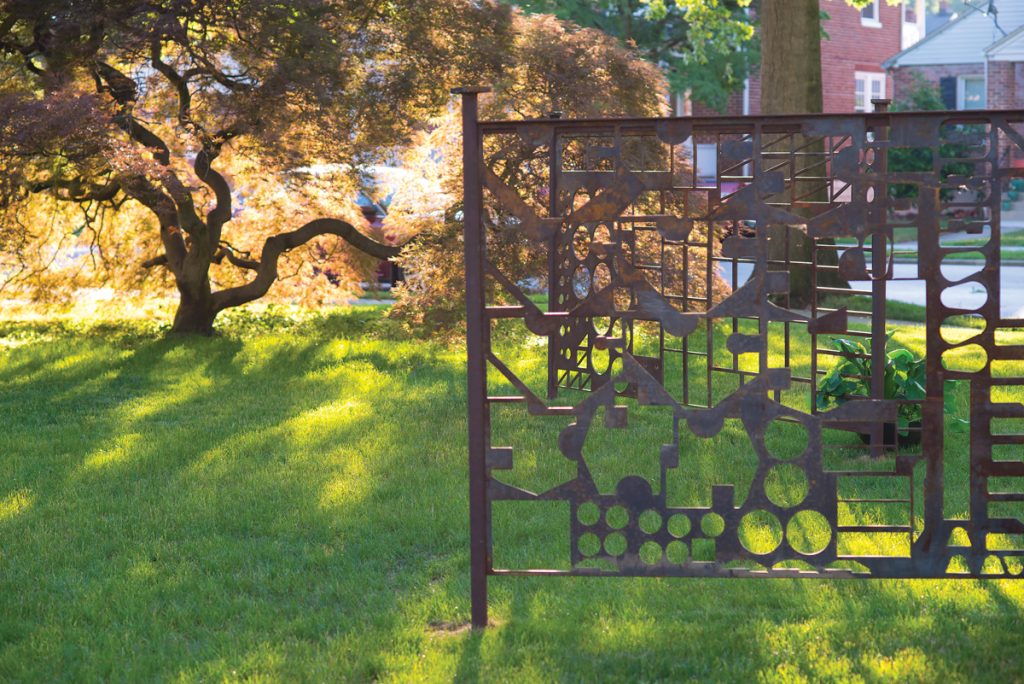 Ron and his wife, Karen, live in a quaint house in Columbia. Originally built in 1937, it was the home of H. Nelson Albright, who was the manager of Columbia Malleable Castings Corporation (which was acquired by Grinnell in 1932 and is now Anvil International) and one of the founders of the Conestoga Foundrymen’s Association. “At one time, Columbia was home to more than nine steel mills and foundries,” Ron notes.
Ron and his wife, Karen, live in a quaint house in Columbia. Originally built in 1937, it was the home of H. Nelson Albright, who was the manager of Columbia Malleable Castings Corporation (which was acquired by Grinnell in 1932 and is now Anvil International) and one of the founders of the Conestoga Foundrymen’s Association. “At one time, Columbia was home to more than nine steel mills and foundries,” Ron notes.
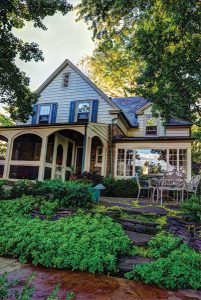 “It’s a well-built home,” Karen says. “All the fittings throughout the house bear the Grinnell trademark ‘G’ on them,” she explains.
“It’s a well-built home,” Karen says. “All the fittings throughout the house bear the Grinnell trademark ‘G’ on them,” she explains.
The Sahds bought the house in 1976. A friend from their church, who lived across the street from the house, tipped Ron off that it soon would be going on the market. Ron talked to the owner, made an offer and three weeks later, the house was theirs.
Karen says the neighborhood and the kitchen windows are what attracted her to the house. “It’s a work in progress and as is the case with other homeowners, we’re always looking for ways to improve it,” she says.
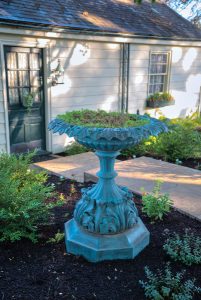 Prior to moving to Columbia, the Sahds lived in East Petersburg so that Ron could be close to Manheim Central High School, where he was a teacher. The family business is what motivated him to eventually return to his hometown.
Prior to moving to Columbia, the Sahds lived in East Petersburg so that Ron could be close to Manheim Central High School, where he was a teacher. The family business is what motivated him to eventually return to his hometown.
In 1941, Ron’s parents, Frank and Lucille Sahd, launched a home-based antiques and scrap-metal business, Frank Sahd Salvage Center. “I can remember going with my dad to an auction just about every weekend and coming home with a truckload of stuff,” he says. “He’d keep a few favorite things and re-sell most of what he bought.”
The cast-iron urn that sits in the Sahds’ backyard is one of those favorite things that found its way into Lucille’s garden. In fact, there were five of them. When she died in 2010, she bequeathed them to her children. Ron and Karen had their urn water-blasted, and Karen painted it. “It’s a nice way to remember my mother by,” Ron says.
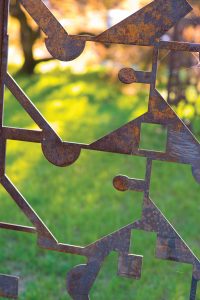 Following World War II, Frank’s brothers, Charlie and Joe, joined the business. By 1950, the business was thriving, and the Sahds moved to their present location at 1045 Lancaster Avenue.
Following World War II, Frank’s brothers, Charlie and Joe, joined the business. By 1950, the business was thriving, and the Sahds moved to their present location at 1045 Lancaster Avenue.
Following the death of Frank, Ron, his brother Wayne, and their cousin, Mike, made the second-generation transition into the business. Eventually, Ron and Wayne’s brother, Frank, joined the team.
During the 70s and 80s, the focus moved away from recycling paper, rags, tires and automotive parts to the processing of ferrous and non-ferrous metals for mill consumption. The new focus, plus an emphasis on green practices, led to a new name: Sahd Metal Recycling.
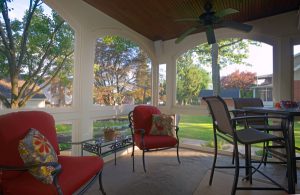 A third generation – Ron’s son, Dan, and Mike’s son, Michael – has joined Ron and Frank to guide the business, which has become a leader in the industry from a green perspective. Ron says the perception of businesses such as Sahd has changed over the years. “We went from being a junkyard, to a salvage center and now a recycling center,” he notes.
A third generation – Ron’s son, Dan, and Mike’s son, Michael – has joined Ron and Frank to guide the business, which has become a leader in the industry from a green perspective. Ron says the perception of businesses such as Sahd has changed over the years. “We went from being a junkyard, to a salvage center and now a recycling center,” he notes.
He finds it interesting that “artists come on an almost daily basis to buy stuff to use in their work.” Some of their work – including that of Lancaster’s Roger Dorsey – can be seen in the Sahds’ home. And, yes, those working on landscaping projects can still poke around the facility to find unique iron fences and gates.
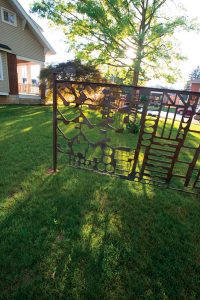 Just as their home is a work in progress, so are the outdoor areas. Three years ago, they screened their back porch and added new walkways. The patio was also refurbished. Last spring a fire pit was added to the backyard. “Our three grandchildren enjoy that,”
Just as their home is a work in progress, so are the outdoor areas. Three years ago, they screened their back porch and added new walkways. The patio was also refurbished. Last spring a fire pit was added to the backyard. “Our three grandchildren enjoy that,”
Karen says.
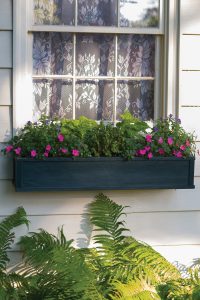 But, something was missing. Karen felt the expansive side yard was too open. She suggested they put up a fence. Ron agreed the side yard needed something, but he wasn’t keen on a fence. “I have a better idea,” he remembers telling Karen. “Trust me,” he said.
But, something was missing. Karen felt the expansive side yard was too open. She suggested they put up a fence. Ron agreed the side yard needed something, but he wasn’t keen on a fence. “I have a better idea,” he remembers telling Karen. “Trust me,” he said.
That “something” had caught his eye at work. Sahd buys large sheets of steel from manufacturers that have parts laser-cut out of them. Typically, Sahd buys the sheets as scrap metal and processes them – through shearing, cutting or baling – before they are sold to a foundry for recycling. Ron viewed the patterned sheets as works of art. “Each one is different,” he says.
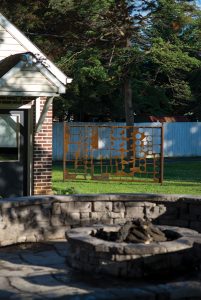 He shared his idea with a friend who is a welder, and together they devised a plan to “frame” the sheets with box tubing. The plan called for extending the tubing 3 feet beyond the bottom of the frame so that the piece could be securely placed in the ground. “They’re heavy, so we also poured cement footers to secure them,” he explains.
He shared his idea with a friend who is a welder, and together they devised a plan to “frame” the sheets with box tubing. The plan called for extending the tubing 3 feet beyond the bottom of the frame so that the piece could be securely placed in the ground. “They’re heavy, so we also poured cement footers to secure them,” he explains.
Karen liked the idea, and two were installed in the side yard while another serves as a backdrop for the fire pit. Both like the effect the steel screens provide. “There’s a sense of openness, but they also create a barrier,” Ron says.
They’ve even earned themselves a name: “He calls them scraptures,” Karen says. “They’ve become real conversation pieces.”





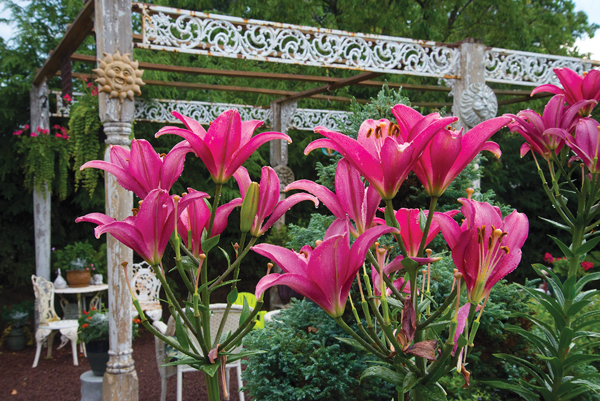
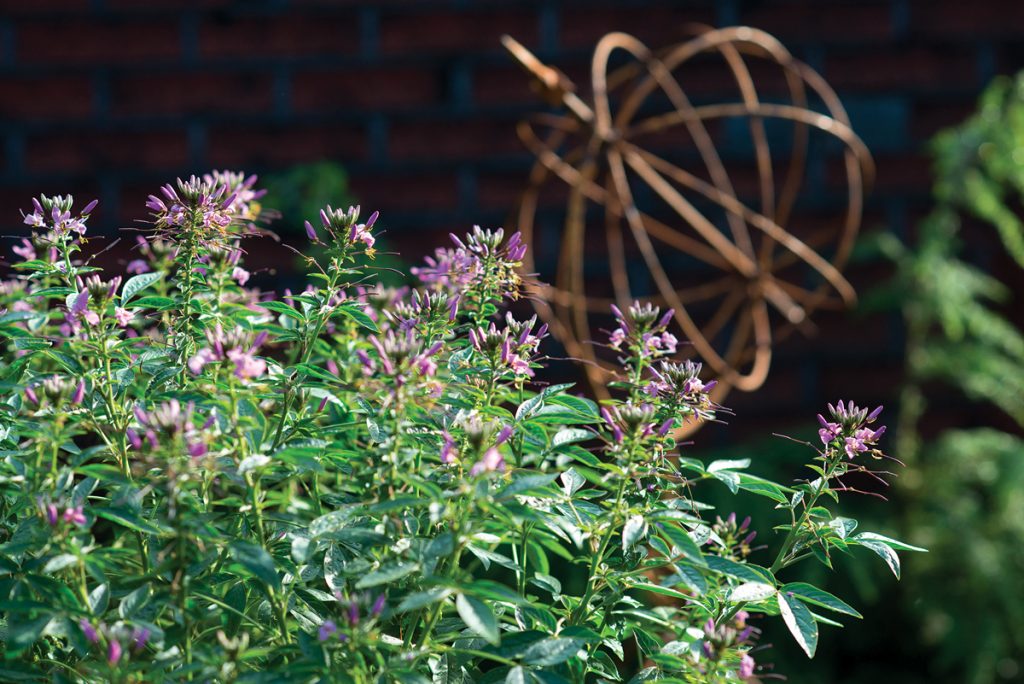
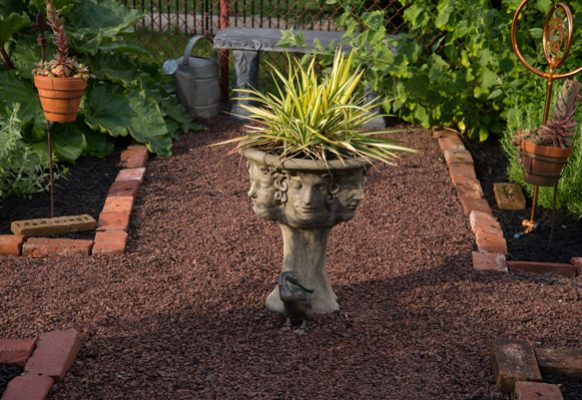
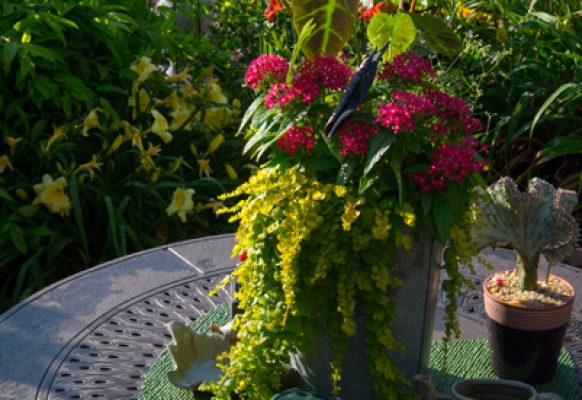
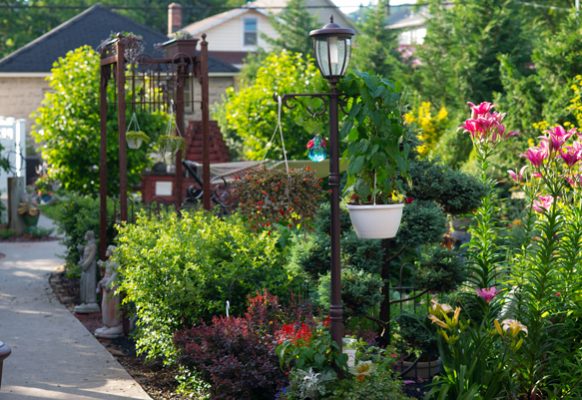
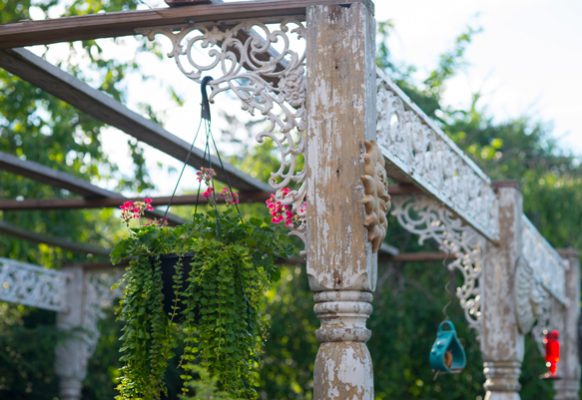

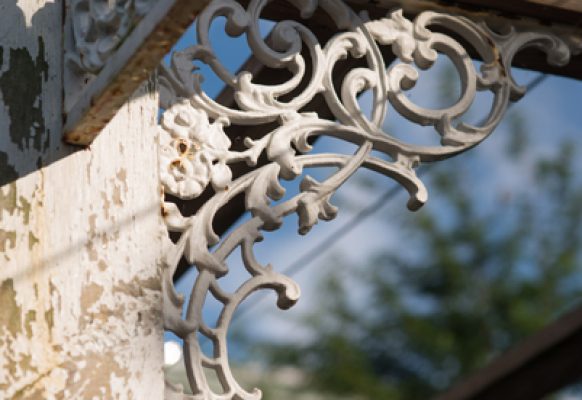
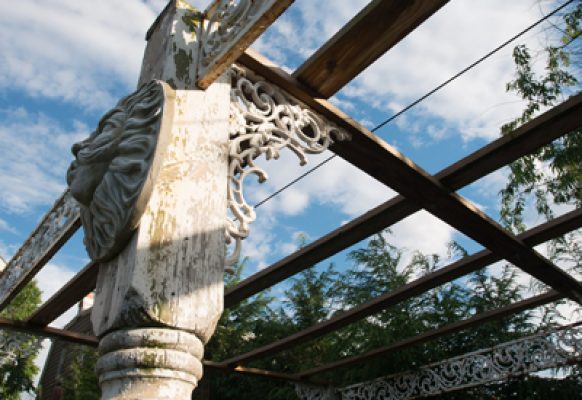
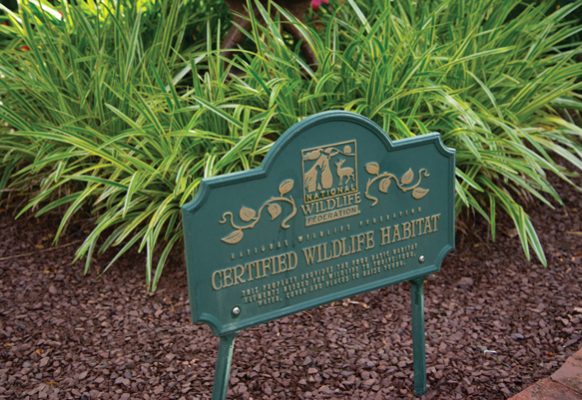
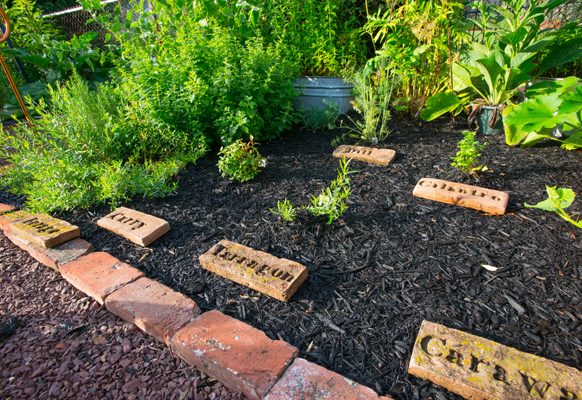
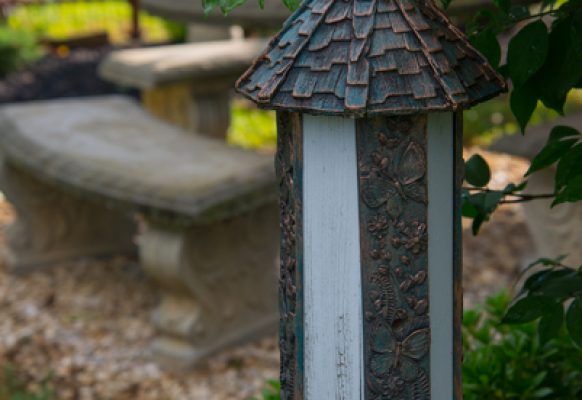
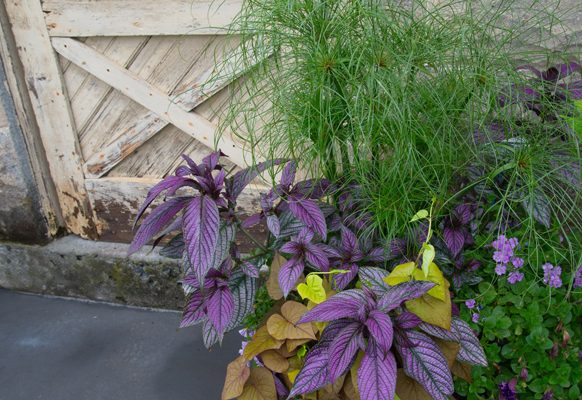
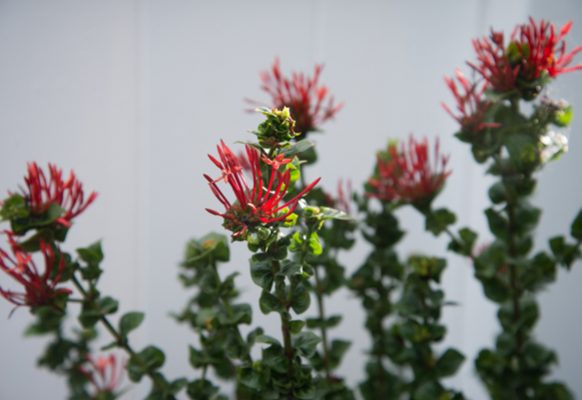
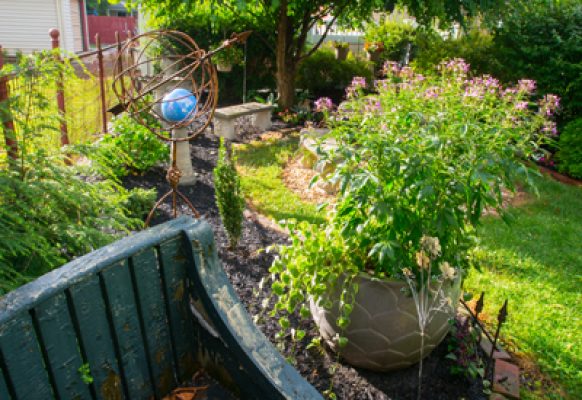
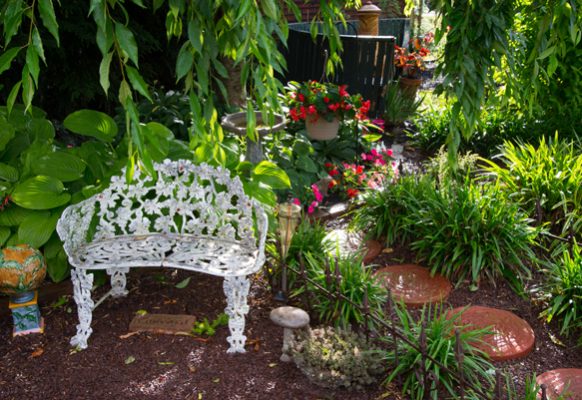
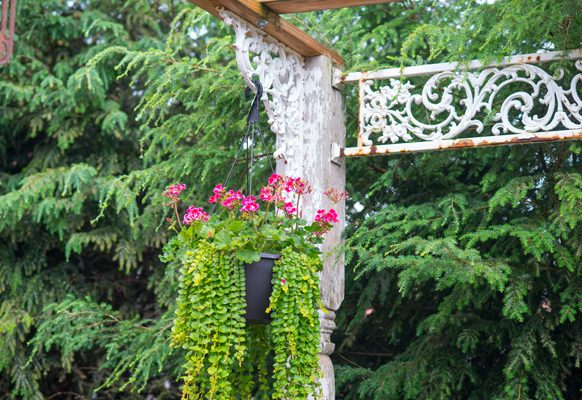
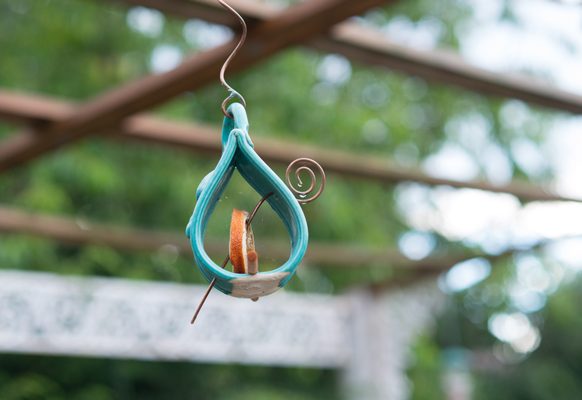
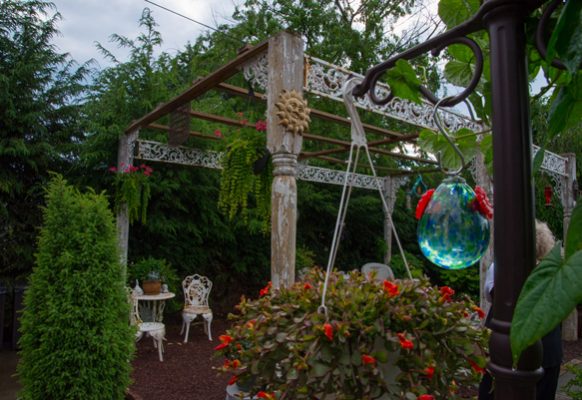
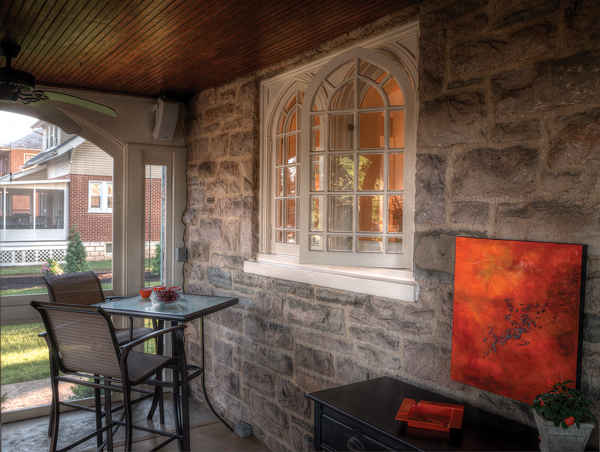
SHARE
PRINT